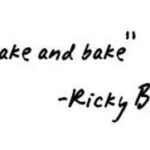If you have purchased a collectible or antique car, you are probably wondering what type of antique car insurance is best for your new pride and joy. Unfortunately, many new collectors assume that the process is the same as insuring any new car bought at a dealership, but there are key discrepancies.
1. Get Your Antique Car Appraised
To purchase appropriate levels of antique car insurance, you first need to know how much the vehicle is worth. A good friend of mine, Harold Esposito, owns five antique cars, and he gets his appraised every five years. You might want to vary the interval, but remember that markets change over time, as do values of collectible cars.
2. Know the Rating
Antique cars are rated for insurance purposes according to their condition, according to Antique Antiques. Your vehicle’s condition might be restorable, a parts car, good, very good, fine or excellent, depending on its maintenance. Your licensed appraiser can help you classify the vehicle if you are unsure.
3. Garage the Car
In some cases, garaging is required for antique car insurance, but even if it isn’t, keeping a collectible car in a garage is the safest method. It will protect the vehicle from the elements as well as shielding it from thieves and vandals. If you don’t have garage space at home, Esposito recommends purchasing a storage space at a local personal storage center.
4. Have a Normal Personal Car
One of the requirements often placed on antique car insurance is possession of an alternate vehicle for regular transportation. The insurance company wants reassurance that you aren’t using your collectible car to get to work or to take your family on vacation. If you use public transportation, you will need to find a policy that does not have this requirement.
5. Evaluate Coverage Regularly
One of the pleasures of owning antique cars, according to Esposito, is the process of restoring them. However, remember that restorations increase the value of the car, so you’ll want to evaluate antique car insurance coverage on a regular basis-particularly after major restorations.
6. Review Valuation Methods
When buying antique car insurance, your agent might use terms you don’t immediately understand. Remember that different companies might apply different definitions to certain terms, so it is always best to clarify. For example, you can buy collectible car insurance for “stated value” or “agreed value.” Although agreed value is usually the best option, make sure your agent explains the difference.
7. Shop Around
There is no “standard” for antique car insurance, so do your research. You might find widely differing quotes from different insurance companies, and buying after the first estimate might result in higher expenses than necessary. Request quotes from at least three providers before making your decision.
8. Become the Sole Driver
You will have to pay more for antique car insurance if you let other people drive it. To avoid this expense, become the sole operator of your collectible car, and never let anyone under the age of 25 behind the wheel. Some insurance companies have rules about this anyway, so be prepared.
9. Increase the Deductible
If you can afford it, increase the deductible when buying antique car insurance. A classic car is unlikely to be involved in an accident if you use it sparingly, and this can significantly lower your monthly premium. Of course, you don’t want to increase the deductible beyond your ability to cover it, so consider your savings and income before making this decision.
10. Talk to Other Enthusiasts
As I discovered when I contacted my friend in my research for this article, classic car enthusiasts are more than willing to share tips and tools of the trade. Talk to other people who have bought antique car insurance to find out what they look for and how much they pay. This can provide you with valuable information in your search for the right type of coverage.
Sources:
“Antique Car Appraisal – the How To’s,” Antique-Antiques.com.



